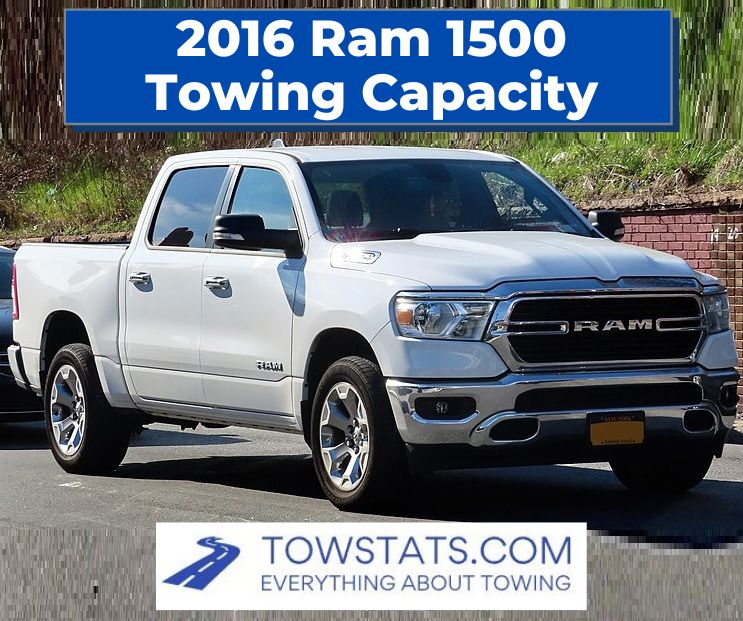The Ram 1500 stands as a quintessential figure in the world of full-size pickup trucks, particularly noted for its capability and versatility. When discussing the towing capacities of the 2014, 2016, and 2017 models, it’s essential to appreciate the nuances in design, engine options, and structural integrity that contribute to their towing prowess. This analysis will delve into the specifications and features that define each model year, offering potential owners and enthusiasts an insightful exploration of their towing capabilities.
Understanding Towing Capacity
Towing capacity refers to the maximum weight a vehicle can safely tow. It’s influenced by several elements, including engine strength, axle ratio, and the truck’s structural build. The Ram 1500, with its multitude of configurations, offers a blend of performance options suited for various towing needs—be it hauling a trailer for a weekend getaway or moving heavy equipment for work.
2014 Ram 1500: A Robust Workhorse
The 2014 Ram 1500 is not only functional but also refined, combining a sturdy frame with an array of engine choices. This model year introduced a lighter yet durable design that enhanced overall fuel efficiency without compromising towing capabilities. At the heart of this truck is a choice between three engines: a 3.6-liter V6, a 5.7-liter HEMI V8, and a 3.0-liter EcoDiesel V6. The 5.7-liter HEMI, renowned for its raw power, can achieve a best-in-class maximum towing capacity of up to 10,450 pounds with the proper configuration.
Moreover, the 2014 model features an available air suspension system, which plays a pivotal role in enhancing ride quality and offering better load leveling under heavy towing scenarios. The capacity to adjust your ride height on the fly is not just a luxury but a practical solution for maintaining optimal control while towing.
2016 Ram 1500: Innovation and Performance
Fast forward to 2016, the Ram 1500 continues to evolve, boasting impressive technological advancements and refined towing capabilities. While the core engine options remain consistent, the EcoDiesel V6 received significant acclaim for its balance of power (240 horsepower and 420 lb-ft of torque) and fuel economy. This year, the maximum towing capacity dips slightly, but modifications in torque delivery and enhanced suspension systems offer improved performance. When appropriately equipped, the 2016 Ram 1500 can tow up to 10,350 pounds, showcasing its versatility across different engine choices.
Another highlight of the 2016 model is the introduction of various towing technologies, such as trailer sway control and integrated trailer brake control. These features significantly contribute to driving stability and safety, ensuring that the driver maintains focused control even under significant load. Additionally, with the available Uconnect system, drivers benefit from seamless communication, enhancing the overall towing experience.
2017 Ram 1500: The Pinnacle of Capability
The 2017 Ram 1500 builds on its predecessors’ strong foundation, further enhancing the range of features dedicated to towing and hauling. While retaining the same engine options, this model year introduced the option for a stronger rear axle ratio, particularly beneficial for enthusiasts with towing needs. With the right setup, the 2017 version can achieve a maximum towing capacity of 10,620 pounds, narrowly surpassing its 2016 counterpart.
What truly sets the 2017 Ram 1500 apart is the cohesive balance between comfort and capability. With interior appointments designed for long hauls, drivers can expect a plush, quiet cabin outfitted with modern technology. Furthermore, the stout frame and rigorous testing ensure that the truck stands firm under load, making it ideal for both work and leisure activities.
Comparative Analysis of Towing Features
When comparing these model years, it’s imperative to recognize that Ram consistently improves upon its towing features and safety technology. Integrated trailer brake controls and sway control mechanisms have become standard fare, ensuring that every iteration of the 1500 not only meets but exceeds the demands of its owners. Furthermore, the weight distribution systems available with these models demonstrate Ram’s commitment to enhancing stability and preventing trailer sway, a critical aspect when maneuvering through varying terrains.
Configurations and Options
The towing capacity can fluctuate notably based on configurations, including cab style, bed length, and axle ratios. Each of these choices impacts how the truck performs under load. It’s essential to consult the manufacturer’s guide and choose appropriate packages tailored to specific towing needs. For instance, opting for the proper tow package—complete with towing mirrors, upgraded brakes, and reinforced chassis components—can elevate the towing experience significantly.
Conclusion: Choosing the Right Truck for Your Towing Needs
The 2014, 2016, and 2017 Ram 1500 models demonstrate an impressive range of towing capabilities while marrying performance with practicality. From the venerable HEMI engine’s robust output to the innovative EcoDiesel’s efficiency, each year brings with it a collection of nuanced improvements that benefit a diverse array of users. To maximize performance, prospective buyers should not only weigh their towing requirements against the truck’s specifications but also explore available packages that enhance functionality.
In the ever-evolving landscape of full-size pickups, the Ram 1500 continues to stand tall as an excellent choice for those who prioritize towing capability, comfort, and advanced technology—all while enjoying a ride that is both competent and enjoyable.
